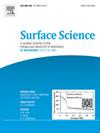SERS, docking and MD simulations of 2-methylene-4-oxo-4-[(3,4,5-trichlorophenyl)amino]butanoic acid (MTB): experimental and DFT modeling
IF 1.8
4区 化学
Q3 CHEMISTRY, PHYSICAL
引用次数: 0
Abstract
The search for effective molecular probes and drug candidates requires a clear understanding of their structural, spectroscopic, and biological behavior. In this work, we investigated 2-methylene-4-oxo-4-[(3,4,5-trichlorophenyl)amino]butanoic acid (MTB) through a combination of experimental and computational approaches. Surface-enhanced Raman scattering (SERS) was measured at different concentrations, while theoretical SERS simulations were performed with Ag6 clusters positioned at the most reactive sites of the molecule. Density functional theory (DFT) calculations, molecular docking, and molecular dynamics (MD) simulations were further employed to explore the electronic properties and binding interactions of MTB with the 4Z8D protein, both in its free form and when complexed with silver clusters. The results show that MTB binds strongly to Ag atoms through chemisorptions and adopts a tilted orientation that changes with concentration. Among the protein-ligand systems, the 4Z8D-MTB-Ag6-W1 complex was the most stable, stabilized by a combination of lipophilic, electrostatic, and hydrogen-bonding interactions. These findings highlight MTB as a promising bioactive-candidate whose performance is enhanced in the presence of silver clusters, offering useful insights for drug design and therapeutic development.

2-亚甲基-4-氧-4-[(3,4,5-三氯苯基)氨基]丁酸(MTB)的SERS、对接和MD模拟:实验和DFT建模
寻找有效的分子探针和候选药物需要清楚地了解它们的结构、光谱和生物学行为。在这项工作中,我们通过实验和计算相结合的方法研究了2-亚甲基-4-氧-4-[(3,4,5-三氯苯基)氨基]丁酸(MTB)。在不同浓度下测量了表面增强拉曼散射(SERS),而在分子最活跃的位点上放置Ag6簇进行了理论SERS模拟。密度泛函理论(DFT)计算、分子对接和分子动力学(MD)模拟进一步研究了MTB在自由形态和与银簇络合时与4Z8D蛋白的电子特性和结合相互作用。结果表明,MTB通过化学吸附与Ag原子形成强结合,并呈随浓度变化的倾斜取向。在蛋白质配体体系中,4Z8D-MTB-Ag6-W1配合物是最稳定的,它通过亲脂性、静电和氢键相互作用的组合来稳定。这些发现突出了MTB作为一种有前途的生物活性候选药物,其性能在银簇的存在下得到增强,为药物设计和治疗开发提供了有用的见解。
本文章由计算机程序翻译,如有差异,请以英文原文为准。
求助全文
约1分钟内获得全文
求助全文
来源期刊

Surface Science
化学-物理:凝聚态物理
CiteScore
3.30
自引率
5.30%
发文量
137
审稿时长
25 days
期刊介绍:
Surface Science is devoted to elucidating the fundamental aspects of chemistry and physics occurring at a wide range of surfaces and interfaces and to disseminating this knowledge fast. The journal welcomes a broad spectrum of topics, including but not limited to:
• model systems (e.g. in Ultra High Vacuum) under well-controlled reactive conditions
• nanoscale science and engineering, including manipulation of matter at the atomic/molecular scale and assembly phenomena
• reactivity of surfaces as related to various applied areas including heterogeneous catalysis, chemistry at electrified interfaces, and semiconductors functionalization
• phenomena at interfaces relevant to energy storage and conversion, and fuels production and utilization
• surface reactivity for environmental protection and pollution remediation
• interactions at surfaces of soft matter, including polymers and biomaterials.
Both experimental and theoretical work, including modeling, is within the scope of the journal. Work published in Surface Science reaches a wide readership, from chemistry and physics to biology and materials science and engineering, providing an excellent forum for cross-fertilization of ideas and broad dissemination of scientific discoveries.
 求助内容:
求助内容: 应助结果提醒方式:
应助结果提醒方式:


